全部Offerings
-
MORE
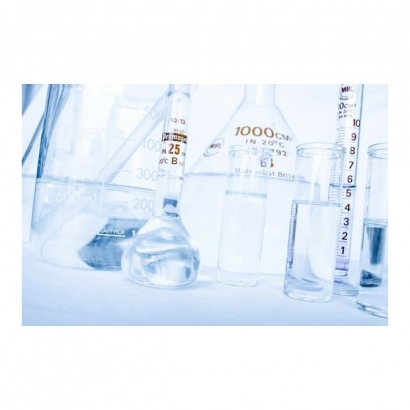 Antibiotic testing and screening system
Antibiotic testing and screening systemAntibiotic testing and screening system
The development of new antibiotics is an urgent priority. Antibiotic research often utilizes clinical drug-resistant strains to evaluate antimicrobial efficacy. However, the resistance mechanisms of clinical strains are often highly complex, making it difficult to assess the effectiveness of antibiotics against specific resistance mechanisms.
To address this issue, our company has developed an innovative antibiotic testing and screening platform using genetic engineering technology (*2017, Journal of Antimicrobial Chemotherapy*, 72, 3302-3316). -
MORE
 Intro
IntroIntro
The rise of antibiotic resistance has become a critical global public health threat, significantly complicating the treatment of bacterial infections. Among the most concerning resistant pathogens are the ESKAPE group, which includes Enterococcus faecium, Staphylococcus aureus, Klebsiella pneumoniae, Acinetobacter baumannii, Pseudomonas aeruginosa, and Enterobacter species. These pathogens are notorious for their ability to evade antibiotic therapy through various resistance mechanisms, leading to increased morbidity, mortality, and healthcare burdens. Notably, K. pneumoniae, A. baumannii, and P. aeruginosa have been designated by the World Health Organization (WHO) as critical-priority Gram-negative bacteria due to their multidrug resistance and limited treatment options. The urgent need for novel therapeutic strategies to combat these pathogens has driven extensive research into alternative antibiotics and combination therapies.
Challenges in Developing Antibiotics for Gram-Negative Bacteria
Developing new antibiotics against Gram-negative bacteria is exceptionally difficult due to their complex and highly efficient resistance mechanisms. Traditional drug discovery approaches often rely on testing large collections of clinical isolates. However, these isolates typically have poorly characterized resistance mechanisms and highly diverse genetic backgrounds. The presence of unknown factors affecting resistance makes it challenging to pinpoint which specific mechanism plays a dominant role in conferring drug resistance. This lack of precision complicates antibiotic development and limits the effectiveness of resistance-targeting strategies.
A Novel Approach: The Antibiotic Testing and Screening Platform
To overcome these challenges, our company has developed a cutting-edge Antibiotic Testing and Screening Platform using genetic engineering technology. This platform comprises three major bacterial species (K. pneumoniae, A. baumannii, and P. aeruginosa) each represented by dozens to hundreds of genetically engineered strains. These strains carry well-defined resistance mechanisms, enabling precise evaluation of compound efficacy against specific resistance determinants.
Furthermore, our platform is designed with a controlled and standardized strain background. All genetically engineered resistant strains are derived from the same parental strain, ensuring a uniform genetic foundation. This approach not only enhances the platform’s expandability, allowing the incorporation of new resistance mechanisms to keep pace with the evolving landscape of antimicrobial resistance, but also provides researchers with a highly controlled environment for comparative analysis. The genetic consistency across strains enables precise evaluation of how individual resistance mechanisms influence the antibacterial activity of specific compounds, thereby improving the reliability and accuracy of antibiotic efficacy assessments.
Key Advantages of This Platform
This system provides multiple benefits for antibiotic research and development:
1.Precision in Compound Design: Enables the development of novel compounds that bypass or neutralize specific resistance mechanisms. Provides insight into structure-activity relationships (SAR) to enhance drug efficacy.
2.Optimization of Combination Therapies: Facilitates the exploration of synergistic antibiotic combinations, where two or more antibiotics work together to overcome resistance. Helps identify optimal dosing strategies to improve treatment outcomes.
3.Advancing Targeted Treatments: Allows for the tailored selection of antibiotics based on a pathogen’s known resistance mechanisms. Reduces unnecessary antibiotic use, thereby slowing the spread of antimicrobial resistance.
Impact on Antibiotic Development
By integrating this systematic approach, the platform streamlines the drug development process, reduces costs, and increases the success rate of discovering effective antibiotics. More importantly, it plays a crucial role in global efforts to combat antimicrobial resistance (AMR) by facilitating the development of targeted, resistance-breaking therapies. This platform represents a pivotal advancement in antibiotic discovery, offering a powerful tool for researchers and pharmaceutical companies to develop next-generation treatments against drug-resistant Gram-negative pathogens.
Patented in the United States (2020) and Taiwan (2022) -
MORE
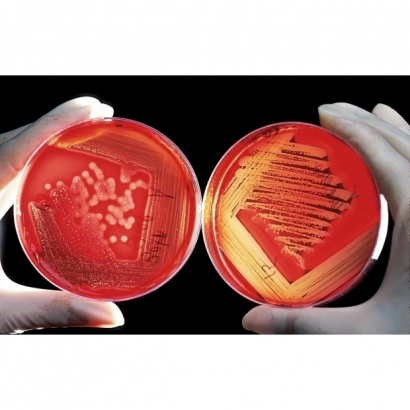 Our strains
Our strainsOur strains
Strain List
Our engineered bacterial strains have been published in international journals, including:
•K. pneumoniae NVT1001 and its derived strains (2017, J Antimicrob Chemother 72, 3302-16)
•A. baumannii KAB1544 and its derived strains (2020, Int J Antimicrob Agents 55, 105918)
•P. aeruginosa KPA888 and its derived strains (2025, Microbiol Spectr, e0241824) -
MORE
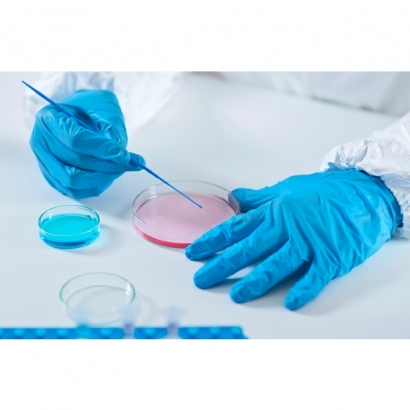 Strain construction service
Strain construction serviceStrain construction service
Our company has extensive experience, advanced equipment, and cutting-edge technologies for constructing genetically engineered bacteria. If the specific resistance mechanism you require for testing your antibiotics is not included in our product list, we offer a custom strain construction service under legal and regulatory compliance. We ensure precise genetic modifications to meet your research needs. If you are interested in this service or have specific requirements, please feel free to contact us for further discussion. -
MORE
 Customer comment
Customer commentCustomer comment
Ø
“VenatoRx Pharmaceuticals’ discovery research team has integrated KeMyth Biotech’s engineered K. pneumoniae tool strains into a diagnostic panel to provide important guidance on properties favoring improved porin entry and selectivity for this important clinical Gram-negative pathogen. We believe that it’s critical to expand our understanding about drug permeability in clinically important pathogens to drive further development of new antibiotics.” Denis Daigle, Director of Biology, VenatoRx Pharmaceuticals
Ø
“Developing new treatments effective against Gram-negative pathogens is one of the major challenges for public healthcare systems. The discovery of new antimicrobial therapies targeting these bacteria is extremely difficult because of their intrinsic resistance of these bacteria due to low permeability of the Gram-negative cell envelope combined with efficient drug efflux mechanisms. Therefore the development of tools such as the Kemyth Biotech library of genetically engineered K. pneumoniae mutants is important to facilitate research to these mechanisms. The discovery team at Antabio uses the tools developed by Kemyth Biotech as an essential part of its research and development process.” Nicolas Sprynski, Head of Discovery Biology, Antabio
Ø
“The library of genetically engineered K. pneumoniae mutants made by KeMyth Biotech represent important new tools for antibacterial research as they enable rapid insights into mechanisms of uptake and efflux in this problematic pathogen. Our research team at Entasis is currently using them routinely in our discovery efforts and is grateful that this important resource has been made available to the general community.” Alita Miller, Head of Bioscience, Entasis Therapeutics
Ø
“Antimicrobial resistance has emerged as a global health problem in recent years. KeMyth Biotech set up the K. pneumoniae resistance system and provide convenient and efficient platform to screen out the useful compounds to against the antimicrobial-resistant bacteria. Our research team use the tool developed by KeMyth Biotech to facilitate identifying compound candidates to overcome the challenge of resistance.” Carmay Lim, Distinguished Research Fellow, Institute of Biomedical Sciences, Academia Sinica -
MORE
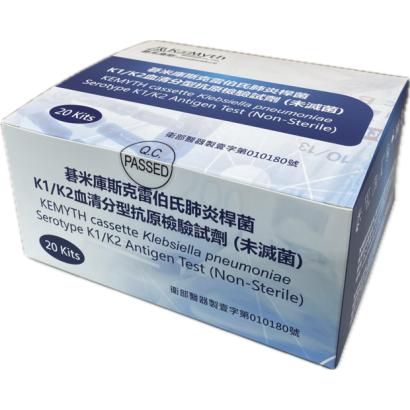 KEMYTH cassette Klebsiella pneumoniae Serotype K1/K2 Antigen Test
KEMYTH cassette Klebsiella pneumoniae Serotype K1/K2 Antigen TestKEMYTH cassette Klebsiella pneumoniae Serotype K1/K2 Antigen Test
Klebsiella pneumoniae is a pathogen that frequently causes both community-acquired and hospital-acquired infections. It can lead to bacteremia, liver abscesses, upper respiratory tract infections, meningitis, endophthalmitis, and urinary tract infections. -
MORE
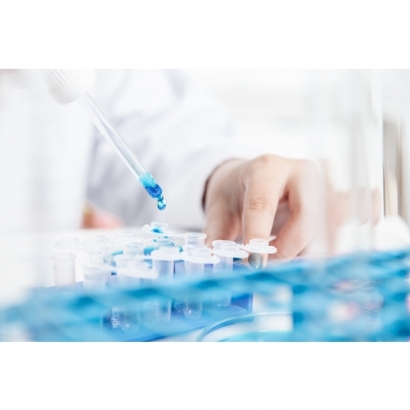 Pharmacokinetics and biodistribution testing services
Pharmacokinetics and biodistribution testing servicesPharmacokinetics and biodistribution testing services
Pharmacokinetics represents how the body processes the drugs after drugs entering the body, including drug absorption (A), distribution (D), metabolism (M), and excretion (E). Pharmacokinetics or biodistribution is presented as the trend of the concentration of the drug in the blood or tissues over time (concentration-time curve).
During the development of new drugs or new formulations, pharmacokinetics can provide important information for researchers to modify their drug design, as well as a reference for the frequency of dosing in the design of therapeutic efficacy studies. Pharmacokinetics is a necessary study for the development of new drugs, and it is also a necessary material for investigational new drug (IND) applications.
We use analytical chemistry, radioactive tracer, and molecular imaging technologies with good animal experiment design and execution to provide customized non-GLP pre-clinical pharmacokinetic studies, allowing researchers to explore the dynamics and behavior of the drugs in organisms. This pre-clinical pharmacokinetic data can serve as the reference for the design of the pharmacokinetic study in the future phase I clinical trial. We provide the animal pharmacokinetic information required by the researcher in the early stage of drug research and development, and assists in obtaining the data for GLP clinical trials and investigational new drug (IND) applications.
For relevant customized preclinical pharmacokinetics and biodistribution testing services, please contact us.
Types of drugs that can be analyzed:
* Small molecule drugs
* peptides
* Biologics such as proteins and antibodies
* Nanodrugs and nanocarriers
* Microparticles (microspheres)
* Cells
Analysis methods can be used:
* Liquid chromatography-tandem mass spectrometry, LC-MS/MS
* Enzyme-linked immunosorbent assay, ELISA
* Radioactive tracer technologies
* Molecular imaging technologies
Animal models:
* Mice, rats, and rabbits, etc. (Including normal and various disease animal models). -
MORE
 Beauty and wellness products
Beauty and wellness productsBeauty and wellness products
With a pharmaceutical research mindset and professional extraction techniques, we have developed a range of natural health products to support overall well-being. Explore our selection and purchase at Kemyth Shop (kemythshop.com).









